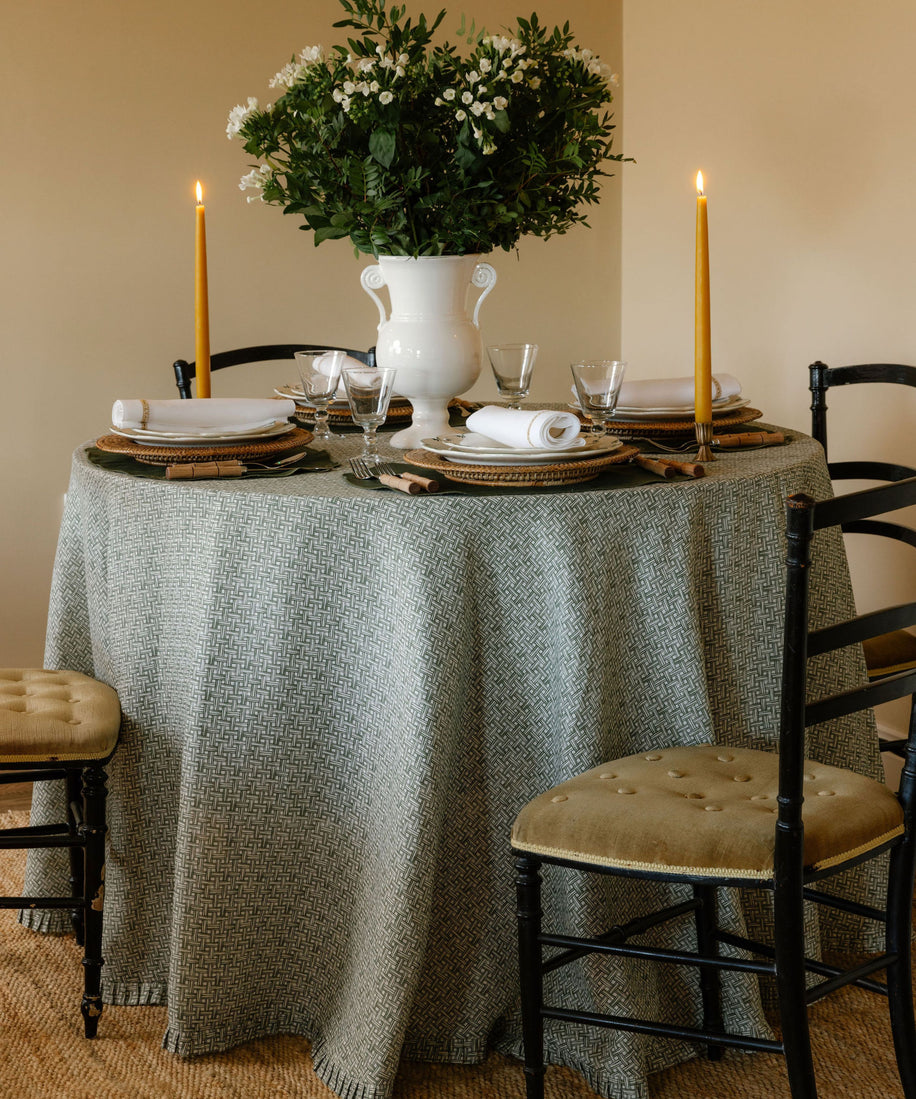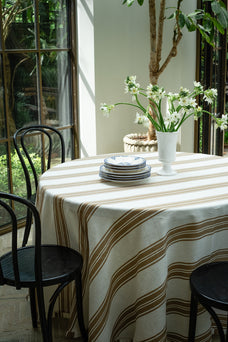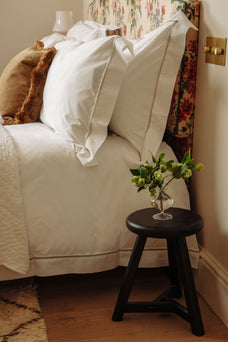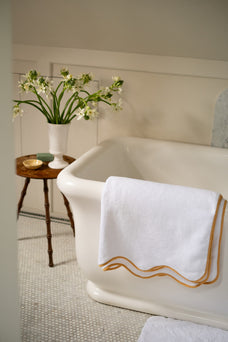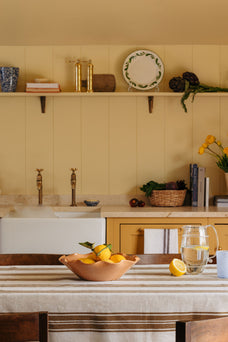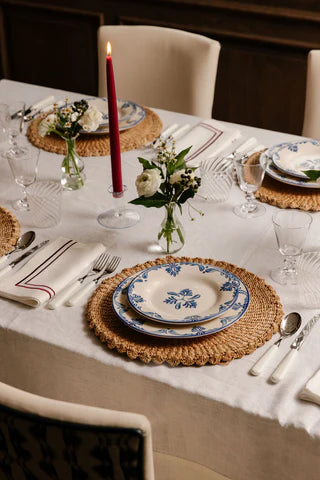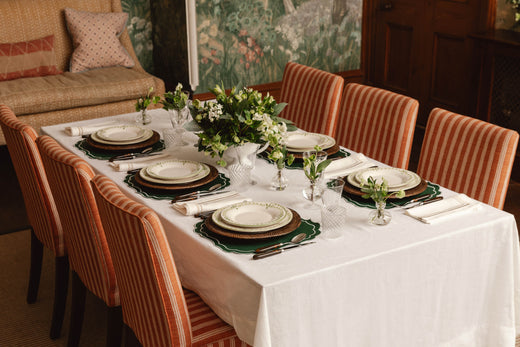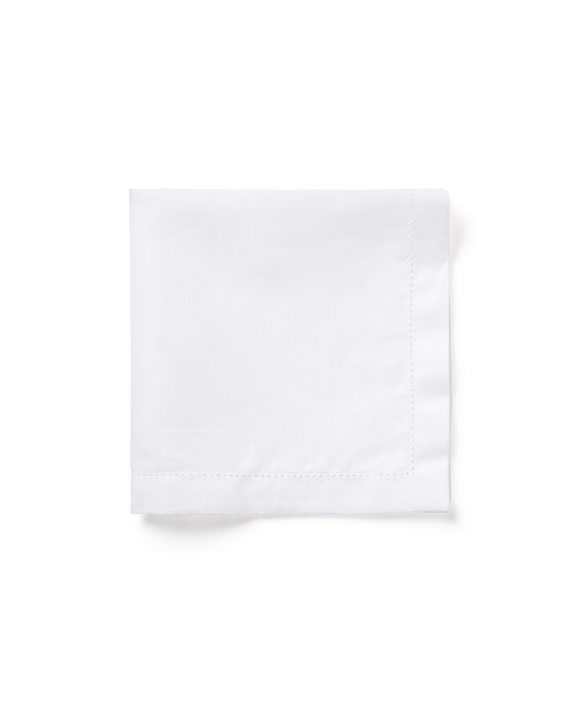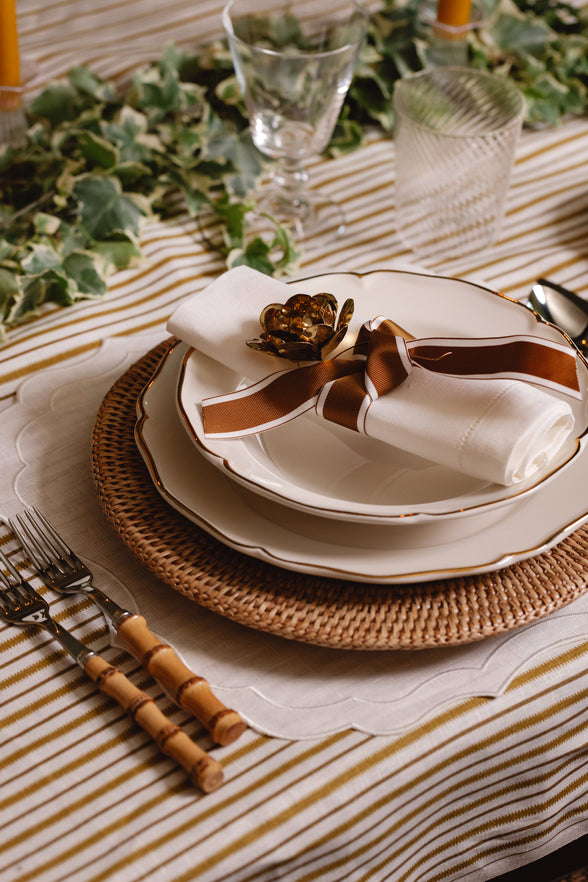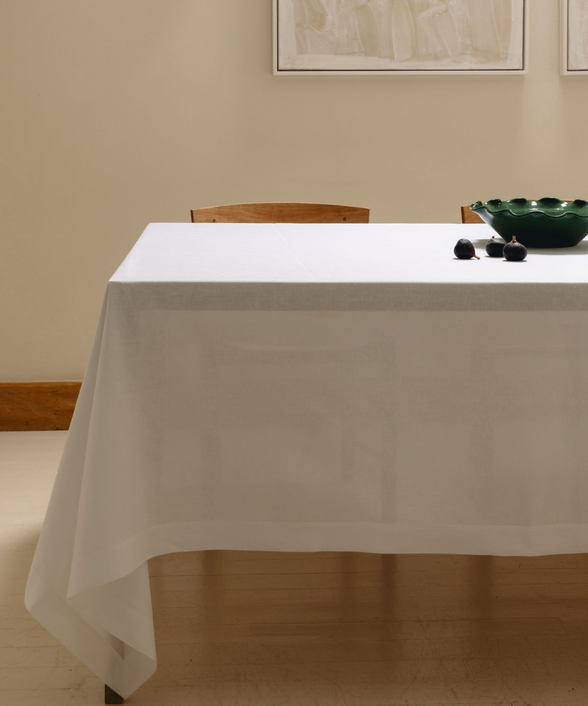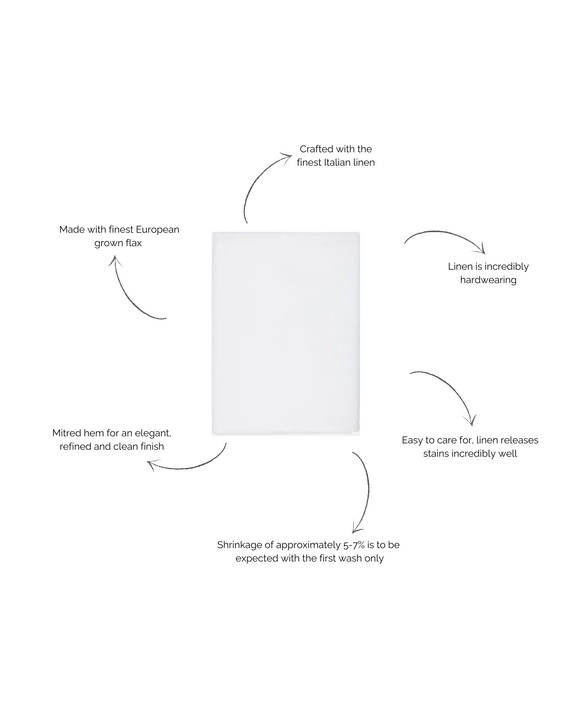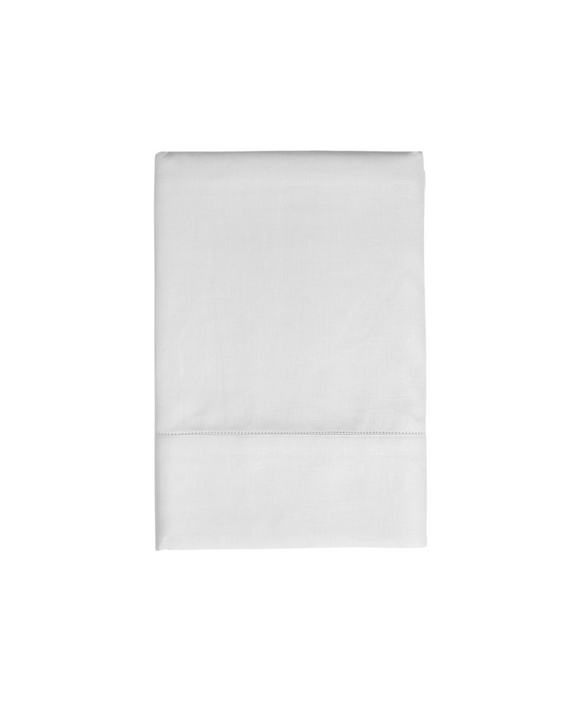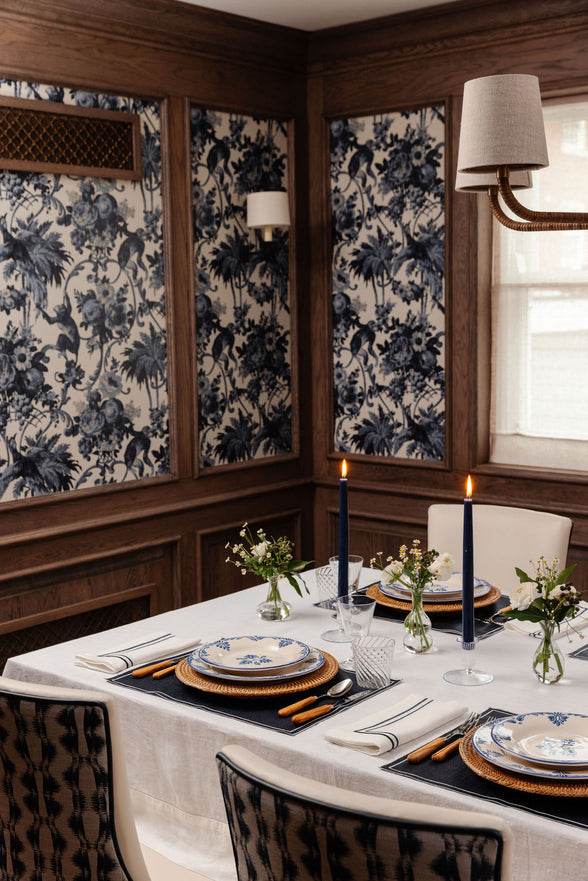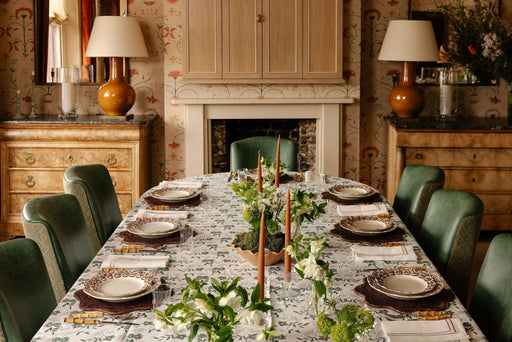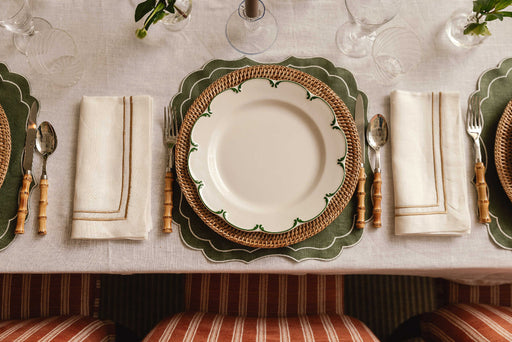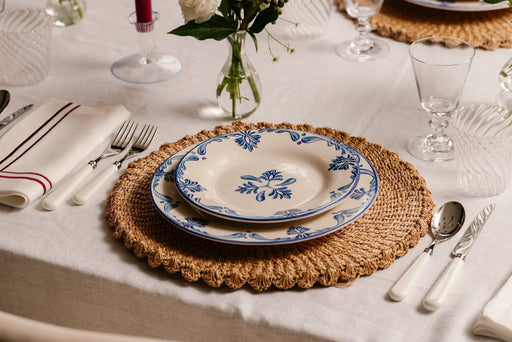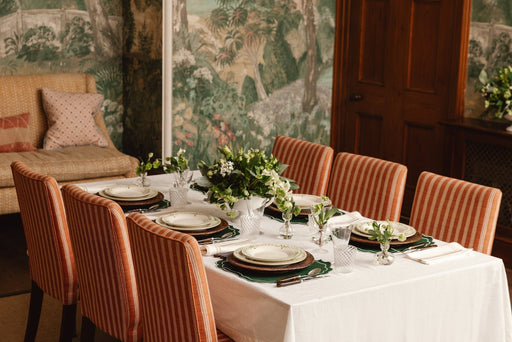European linen has been a well-loved textile for thousands of years, before numerous detergents and dry cleaners to do the hard work for us. When it comes to maintaining your table, bed and bath linens, you only need to adopt some simple methods for the best results. You may even be able to pass them on!
Before you wash your linens
We would recommend spot cleaning your table linens such as placemats and tablecloths, where possible, as this will prolong their lifespan by not over-washing. Bear in mind that European linens will last a lifetime and possibly longer, so don’t let this deter you using them and saving them for best. Washing is, of course, inevitable and it’s worth bearing in mind that linen is the strongest natural fibre known to man. It is even stronger when wet which is why it withstands the washing machine so well - and should be ironed when damp.
To reduce the likelihood of permanent stains, it’s advisable to pre-treat more pigmented stains, such as lipstick, red wine and coffee, before washing. Blotting with white vinegar and baking soda is usually most effective when it comes to pre-treating stains. You can use supermarket found “stain treatment” products, but always colour test first.
During a dinner party, no one wants to be uptight. If red wine is splashed or knocked over, try sprinkling some salt on the spill. Doing so will prevent the stain penetrating somewhat. Further, remember that linen releases stains much more easily than other fabrics (including cotton), and in my experience, I have never had red wine or coffee stain my linens - even when I have not been able to soak them very soon after. The riskier food items would understandably be turmeric, lily pollen and very high oil based foods, for which case I would recommend dark linen napkins or possibly smart paper napkins.
It’s also important to wash your linens or soak any stains as soon as you can. Leaving stains to penetrate the fabric over several days will make them more difficult to remove.
On a particularly dark or pigmented stain, you may need to use a readily available chemical stain treatment. We would recommend always testing this on an inconspicuous area before proceeding as they can remove colour.
Never use bleach on your linens. If you need to brighten your white linens, you can hang them out in the sun. Plus, nothing compares to the smell of fresh laundry that’s been hanging outside to dry!

How to wash your linens
Linen is machine washable. Most linens can be washed at 30 degrees – a cool wash is often enough to remove most light staining. You can wash your linens up to 60 or even 90 degrees for white and natural linens, but doing so weekly over a very long period would weaken the fibres and is less environmentally friendly.
Use a sparing amount of detergent to avoid product build-up. You should not use detergent with optical brightening agents or any products containing chlorine. Most “sustainable” detergents are without OBAs, but please check the ingredients. Linen gets softer with every wash, so there is no need to use any type of fabric softener.
To further improve your results, always unfold your napkins before washing. Keep your wash load fairly small to allow each piece to be evenly cleaned. Wash linens with other linens or similar natural fibres.

Drying your linens
Linen is incredibly fast-drying, therefore there is no need to tumble dry your linens. Tumble drying is likely to also lead to unnecessary shrinkage. It is best to air dry your linens, whether hanging outside in the summer breeze, or over an indoor airer for a crisp but soft feel.
Ironing your linens
Linen is strongest when wet, so always dampen linen when ironing or iron just before it has fully dried after a wash. Use your iron on a medium to high heat and with steam. You can use starch on your tablecloths, placemats and napkins to keep them beautifully crisp and wrinkle-free. Starch also helps to protect your linens from stains.
Storing your linens
Store your linens in a cool, dry place. Don't store linen in plastic as it needs to breathe and storing in plastic can lead to yellowing. Where possible, it is best to store your linens rolled, rather than folded. Linen is a great fabric and is best used - don't save your linen napkins and tablecloths for best!
Discover our collection of table linens, including tablecloths, napkins and placemats.


